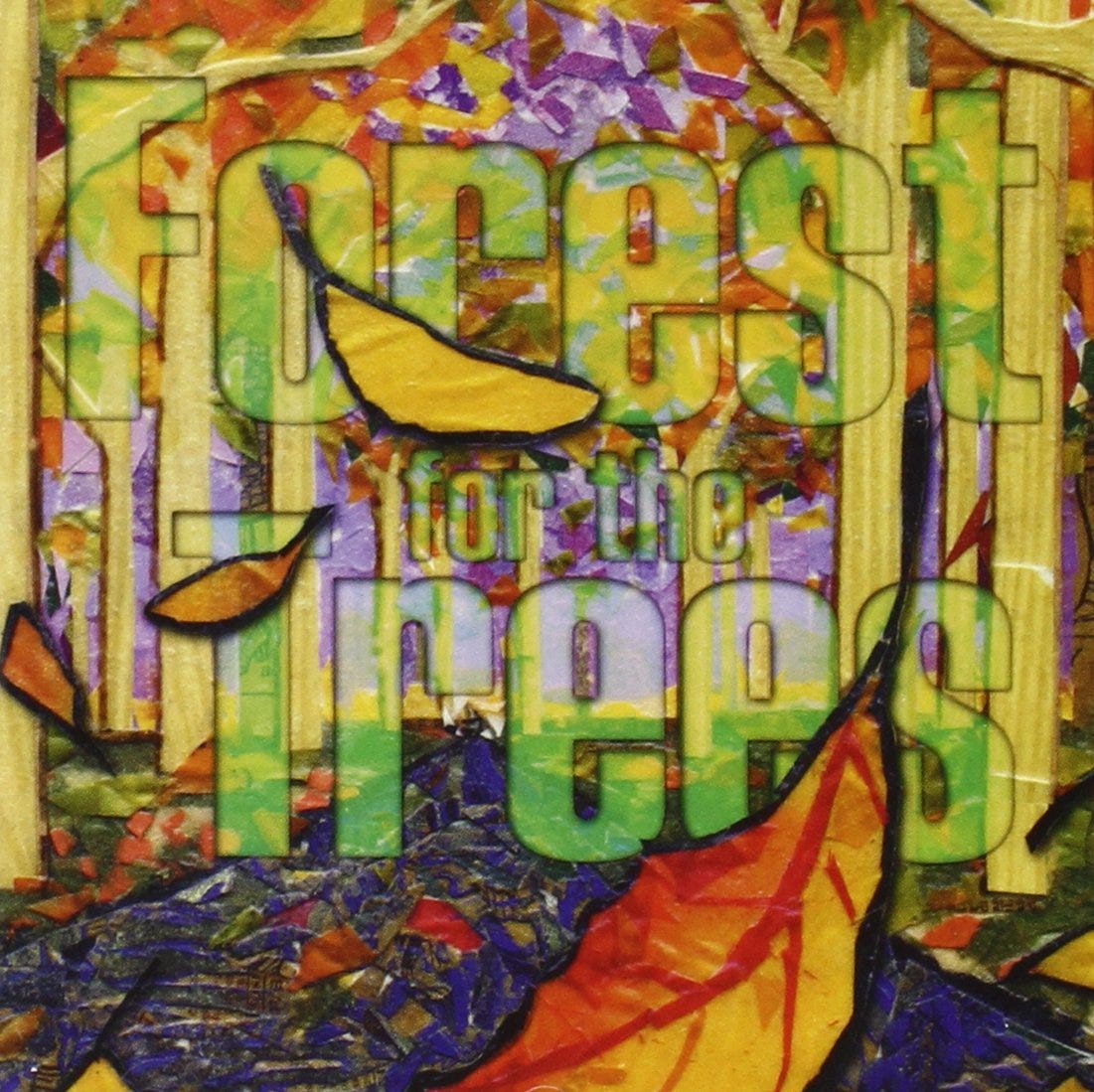If you’re anything like me, you have at least one band you hold precious. A band that you wish everyone would listen to but that you know in your heart not everyone will. In fact, fewer of those who listen will “get it.”
For me, one of those bands is Forest for the Trees.
The band was essentially a one-person show run by Carl Stephenson but did have contributions from Mark Petersen, John "Coz" Acosta, and Papa Bear Martinez, among others.
Of course, you might know Stephenson because he co-wrote and co-produced Beck’s seminal “Loser.” You might also know him from his work with the Ghetto Boys (seems a little incongruous at first, I know).
Now, on paper, Forest for the Trees isn’t my kind of music. I’m a rock and roll guy, through and through, guitar, bass, drums, and vocals. So an artist that’s this unique, that’s part electronic, part experimental, part noise, part trip-hop, part sound collage, and part psychedelia, would not land in my purview.
I mean, that’s an awful lot of genre and sub-genre to cram into one album, let alone a four-minute song:
James Lien of CMJ New Music Report praised Carl Stephenson, calling him:
“… one of the key architects of the zeitgeist of the times."
He went on to say: "Stephenson creates a musical world where hip-hop beats blend with bagpipes and B-movie sitars, acoustic folk guitar strums, found vocal samples and hazy, dazed stoner raps." Yep, can confirm.
Kembrew McLeod of AllMusic was less favorable, saying: "Forest for the Trees tries to be everything at once and ends up being nothing at all, pleasing only those who favor 'interesting in theory' collage-oriented music over some semblance of catchy songs."
I’m much more in the Lien camp, but I understand what McLeod is saying. Not all of these songs are great, but they are all interesting—and not just in theory. The songs are catchy, and it’s clear Stephenson is doing something unique.
Very little is known about Carl Stephenson. What we do know is that following the release of "Loser," Stephenson struggled with mental health issues, including depression and a potentially debilitating mental disorder in which a single word can trigger either a loss of focus or intense, obsessive ruminations; these have led to him being in and out of institutions. These difficulties were compounded by the pressures of sudden fame and the complexities of the music industry - a business not particularly known for its warmth and cuddliness.
Forest for the Trees only recorded one self-titled full-length album. Recorded a few years earlier, it was ultimately released in 1997, on Dreamworks Records. It’s an obvious kissing cousin to “Loser” and, I would argue, sounds adjacent to the far punchier Liam Lynch track “United States of Whatever.”
Carl Stephenson and Forrest for the Trees released the EP The Sound of Wet Paint in 1999.
Both records were made under the watchful eyes of industry veterans Tony Berg and
Lenny Waronker.
Apparently, Forest for the Trees was released after one of Carl Stephenson’s stays in a hospital. According to the NYTimes from 1997:
“But with Mr. Stephenson's health improving and current music trends catching up with his ideas, they (the record label) thought that putting the record out now would help him deal financially and emotionally with the healing process.”
Forrest for the Trees is one of those fascinating and contradictory albums for me. On one hand, it’s peculiar as hell, and I struggle with what the songs are about. On the other hand, it’s a beautiful inspection of the mind presented on a nice, albeit peculiar, landscape… err, soundscape. It is both of its time and timeless.
The album reminds me of the explorative side of Brian Wilson, sans hooks, or maybe even a sonic version of a Salvador Dali painting.
Between Forrest for the Trees and The Sound of Wet Paint, it becomes crystal clear that Stephenson knows the cloth from which he is cut, but he keeps those references in the rear view mirror, but not out of sight.
After stepping away from the public eye and music production, Carl Stephenson has maintained a low profile. There is little public information about his activities following his work in the 1990s—at least nothing that I could find.
Even if he only had “Loser” to his credit, that would be a significant contribution, but luckily there is Forrest for the Trees and The Sound of Wet Paint.
Whether you’re in the first, second, or third person, for those that are open to it and listen, in Forest for the Trees, you won’t hear the diary of a madman, but you will hear the inner workings of a very creative individual.






Sorry to double dip. I’d like to get a copy of this album. Can’t find it on Bandcamp or Apple or maybe I’m just not looking right. Can you help?
I agree. What a cool album. I didn’t expect to have a video to which is also pretty cool, but just the combination is killer. Could be a new favorite. Thanks for putting it out there.